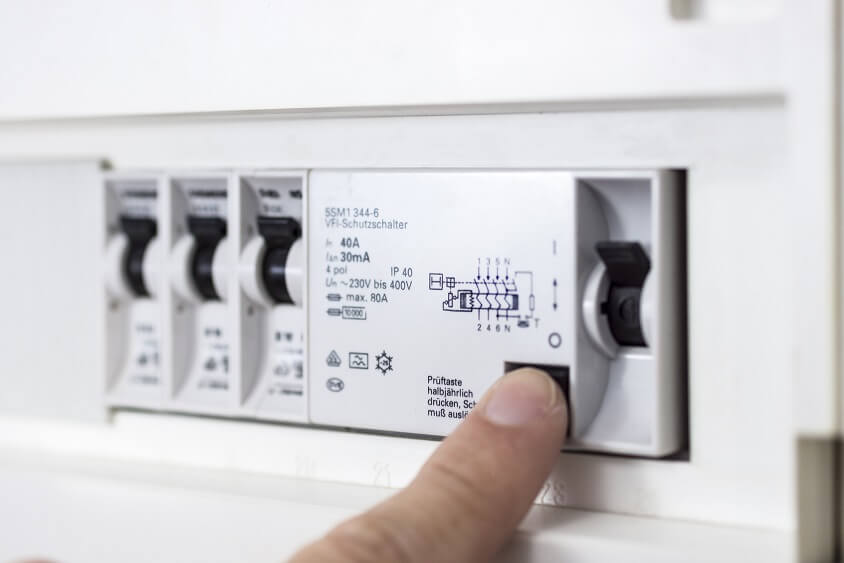If a hair dryer falls in the bathtub or the toaster falls into the washing-up water, it can be fatal. The normal home fuse (fuse and line circuit breaker) offers no protection against electric shock as it reacts too slowly and protects only the cables against overload and thus prevents extensive damage. Real protection against electrocution is provided only by “RCD” circuit breakers.
Lightning fast reaction to strong current differences
RCD circuit breakers are also referred to as residual current circuit breakers. In the case of intact electrical devices, the electric currents in the outgoing and return conductors are always the same strength.
If an incident occurs, such as if someone touches live parts, there is a difference between the outgoing and return current — and the RCD interrupts the circuit completely.
This is usually done even in very low differences around 30 milliamps. The lower the value, the quicker the shutdown. Common residual current circuit breakers react in less than 40 milliseconds. Normal fuses (fuse and line circuit breakers) normally only interrupt the circuit at current levels above the specified rated current, as in the event of short-circuits for example.
This is sufficient to avoid cable fires. However, they do not protect people effectively against life-threatening electric shocks. In a proper electrical installation RCDs are used in addition to the existing protection (fuse or line circuit breaker).
Circuit breaker retrofitting
RCDs are not installed in all households, there is a lack of relevant regulations. Since 1984, RCDs have been mandatory in new buildings in bathrooms.
And since the start of 2009, in principle, all sockets in new buildings have to be protected by an RCD.
If you live in an old building without a residual current circuit breaker, you should consider retrofitting. The cost of installation by an electrician is generally low. Usually you would not need to tear down walls or reinstall cables.
A few tweaks to the fuse box are usually enough, which are completed in no more than one hour. Important: The work must only be carried out by professionals.
If you are unsure whether you already have an RCD, it is very easy to find this out. You just need to look at the fuse box. If you can find a switch labelled “RCD”, then the life saver is already installed.
Furthermore: At the same place, you can test the circuit breaker for correct operation: If you press the Test button, the power supply should be interrupted. You should ideally do this check on a regular basis, preferably once per quarter.
RCD switch in the mobile version
If you are afraid to install an RCD, you can equip individual sockets or circuits with a protective device instead. Mobile RCDs type PRCD make it possible.
The circuit breakers that are available from 20 euro are used in the bathroom and garden, for example, between the power supply and the power socket — and offer even more protection than fixed RCD circuit breakers: The mobile switches detect not only faults in the connected electrical appliance, but also in the supply system.













